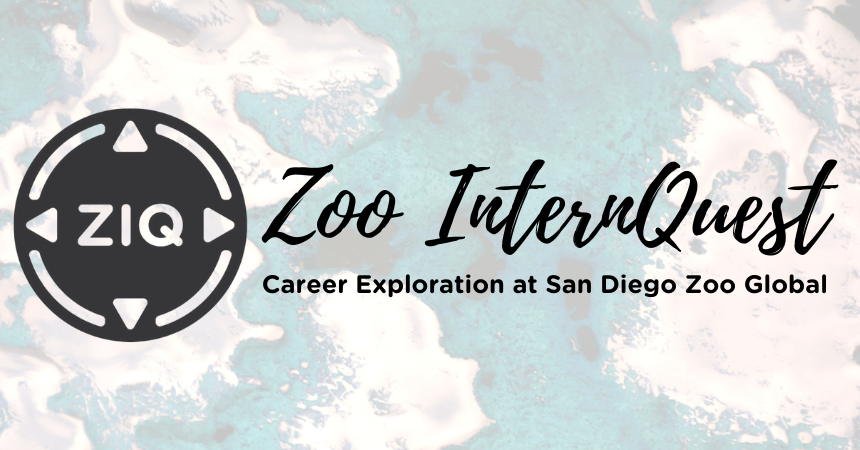Zoo InternQuest is a seven-week career exploration program for San Diego County high school juniors and seniors. Students have the unique opportunity to meet professionals working for the San Diego Zoo Wildlife Alliance, to learn about their jobs, and then blog about their experience online. Follow their adventures here on the Zoo’s website!
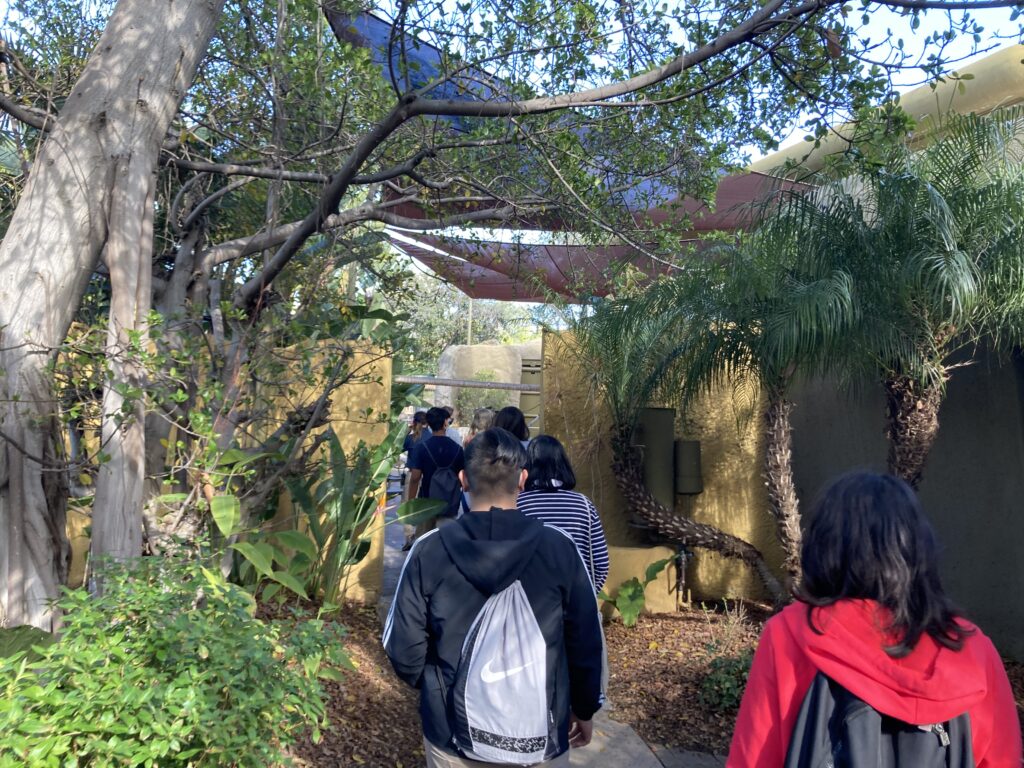
It is no secret that wildlife and habitats around the world face threats to their survival, and training animals to be wildlife ambassadors helps forge connections between wildlife and guests. This helps bring awareness to general risks to wildlife as well as more specific threats each environment is facing. This week, the interns got to meet Ms. Kelly Elkins, who works at the San Diego Zoo and is responsible for a team of wildlife care specialists and wildlife ambassadors. Ms. Elkins wasn’t the only highlight of the day; throughout their time learning at the Zoo, the interns also got to meet a binturong, a zebra, and even a sloth, as well as feed some flamingos!
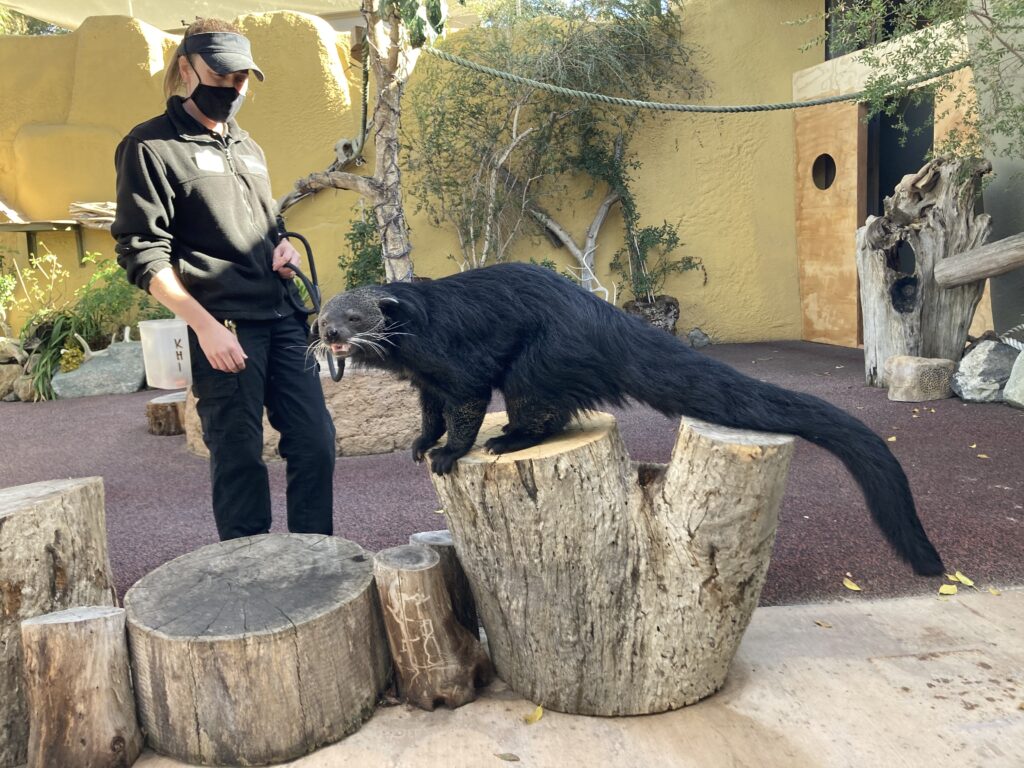
Ms. Elkins, a Wildlife Care Lead, has been at the San Diego Zoo for almost 16 years. With a degree in Exotic Animal Training and Management (EATM), she highly recommends Moorpark College for students aspiring to work at wildlife education facilities. Emphasizing the importance of volunteering at an animal center, Ms. Elkins truly believes all experiences working with animals are of value–whether it be working as a vet tech or cleaning kennels. With so many possible careers involving animals, volunteering is the perfect way to find the one that best suits you. For Ms. Elkins, her years of experience as a dance teacher further developed her passion for training, while her time as a dog trainer solidified her desire to work with animals. By getting a feel for timing and picking up on behavioral cues, Ms. Elkins loves the almost rhythmic conversation that occurs when training wildlife at the San Diego Zoo.
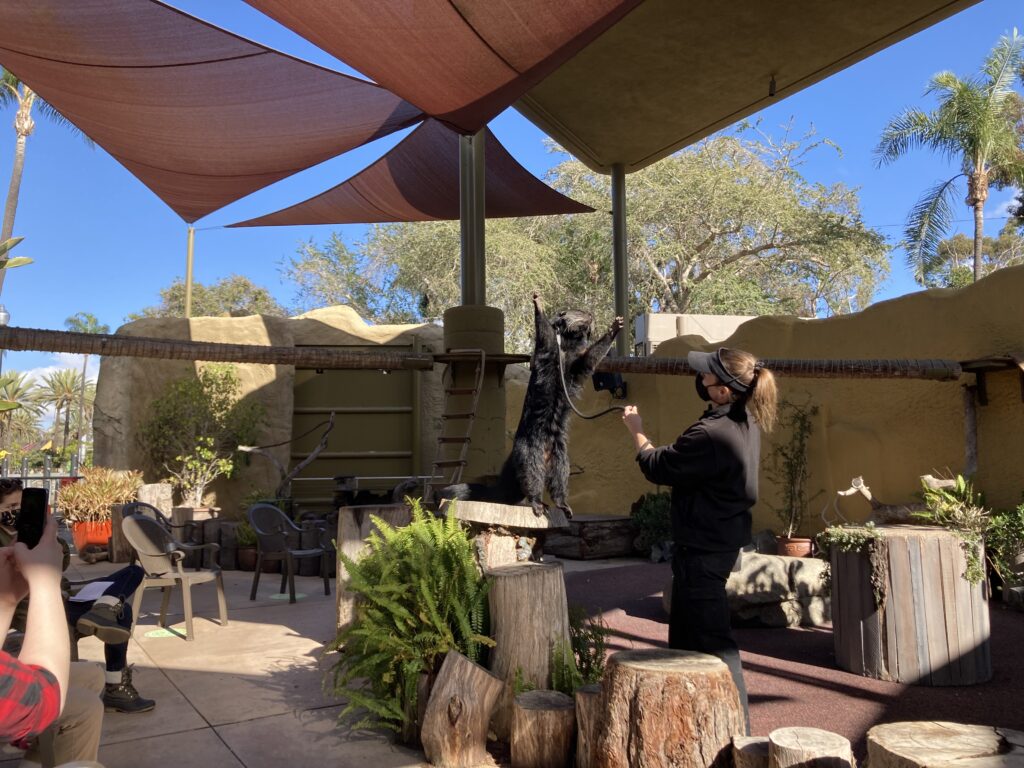
As the Wildlife Care Lead, Ms. Elkins works with other Wildlife Care Specialists to help train and care for wildlife ambassadors. However, there is more to her job than just animal training. Her job, as she puts it, can be classified as “a science and an art”: a science, due to the knowledge required to care for and maintain these ambassadors; and an art, due to the need for creativity in working with these animals. As the Wildlife Care Lead, Ms. Elkins needs to understand the animal’s diets, behaviors, habits, preferences, and medical practices to maintain their health. Some of her maintenance responsibilities include filing nails, grooming, and checking the overall health of the ambassador. Over her years working at the zoo, she has turned communication into a creative art by understanding behavioral cues from the animals. To be a Wildlife Care Specialist, you need to collaborate with other Specialists as well as animals.Throughout her career she has worked with a variety of species such as porcupines, fennec foxes, flamingos, and wolves. She spends her entire day working with these animals, whether that be presenting, training or caring for them. With a job that takes 24/7, 365 days a year, Ms. Elkins has dedicated her life to her animal ambassadors. “It’s not a job: it’s an emotional commitment.” To do what she does, she needs to be flexible; with “every day never the same,” she is skilled at changing and adapting to the state of her duties and wildlife ambassadors. Ms. Elkins has also had to make numerous sacrifices for her career. She spends most of her time with the ambassadors, being with them “more than at home”. She is full of passion and joy and is happily “married to her job.”
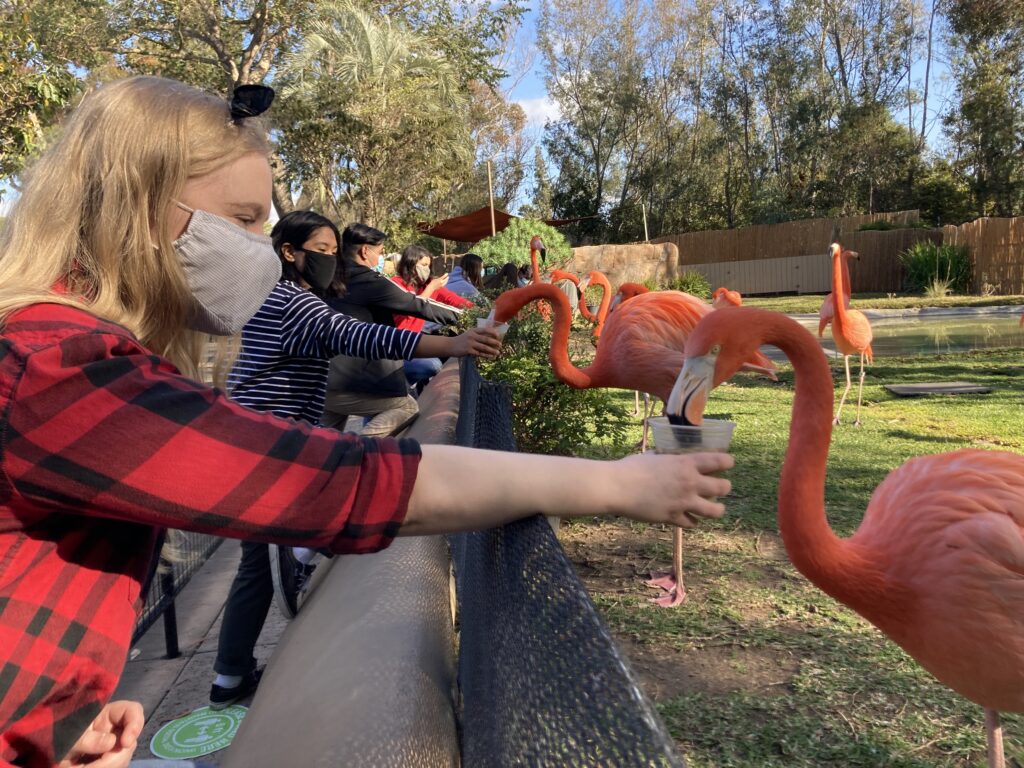
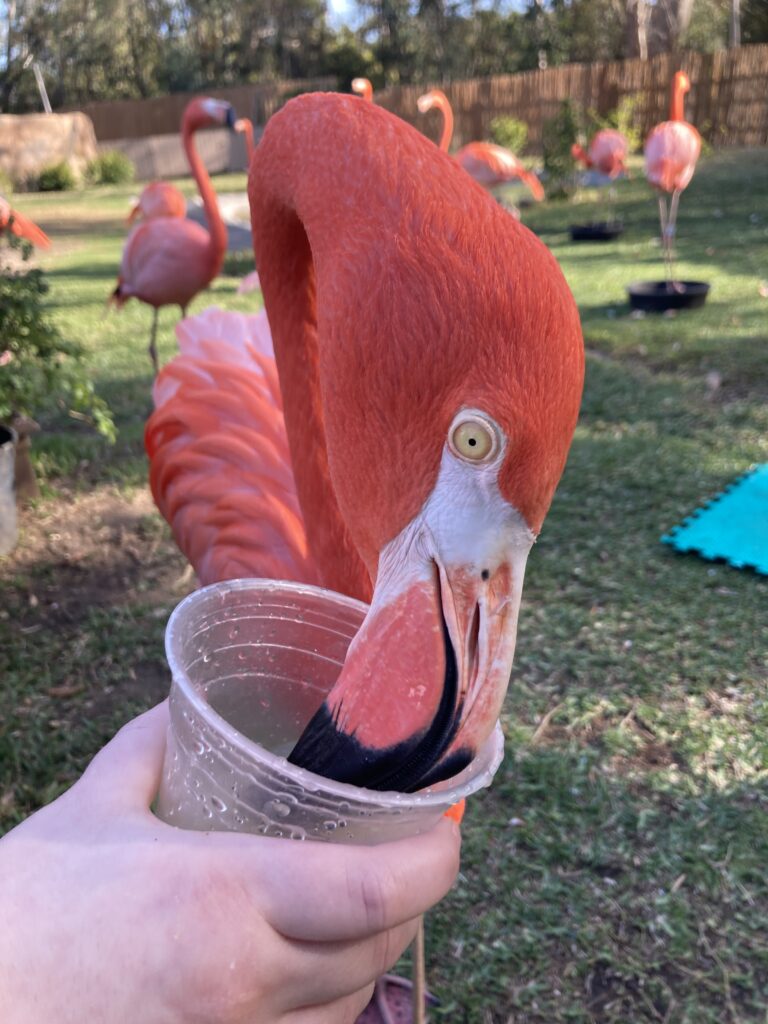
With such an incredible job, it is not surprising that Ms. Elkins struggles to pick one aspect of it as her favorite. However, it soon became clear that her favorite part is the “aha” moments when connections are made. She loves seeing that moment when people in her audience get emotional about the wildlife she introduces them to–the exact moment when she can see the excitement, awe, and realization in their eyes about how cool the creatures on this planet are. Ms. Elkins finds great satisfaction in helping people grow in their enthusiasm for wildlife through this process. Equally as special to her are the “aha” moments she has between the wildlife she cares for and herself. The moment when they finally master a behavior they have been training and she can tell that something has just clicked in their mind is magical to her. It is a moment of deep connection, understanding, success, and joy between her and the animal. Ms. Elkins also greatly enjoys how her job is ever changing and full of variety as it prevents her from ever getting bored. She is lucky to work with a large variety of wildlife ambassadors in her job, her favorite of which are the red river hogs, wolves, cheetahs and clouded leopards. She loves the personality and intelligence of these animals, from the amicable cheetah to the spirited leopard. At the San Diego Zoo, the Wildlife Care Specialists, including Ms. Elkins, and their wildlife ambassador co-workers form their own little family group, forged through connections made interacting each day.
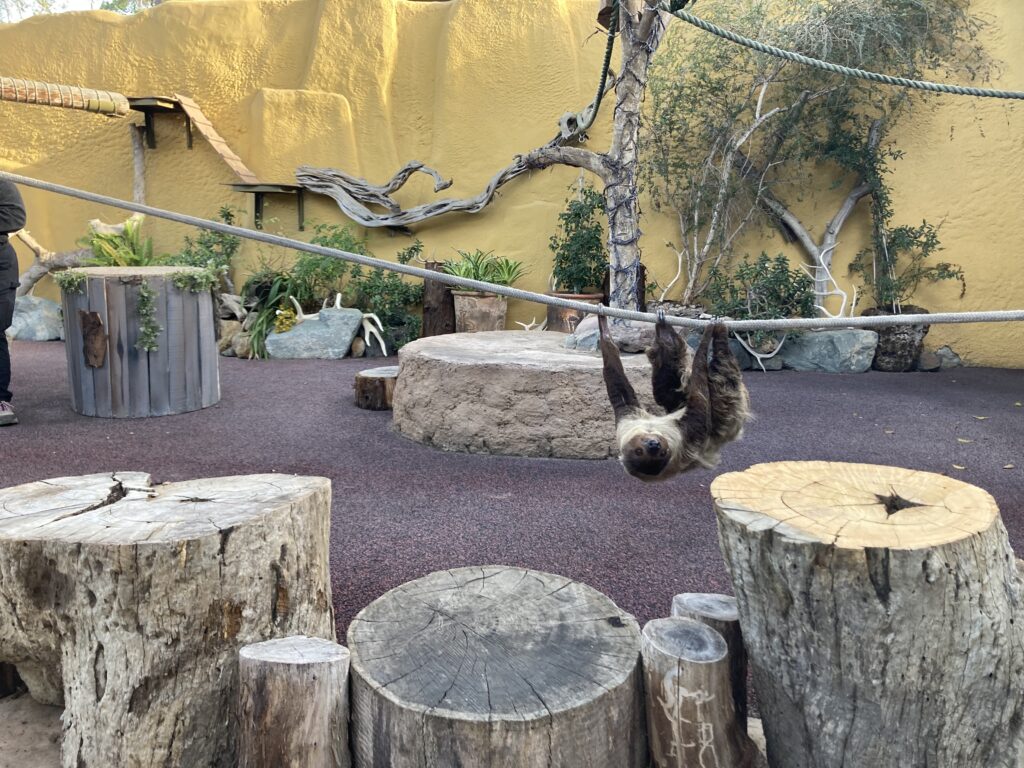
Sloths can normally be found in the tropical forests of South America, unless you are Paloma, a seven-year-old Linnaeus’s two-toed sloth who serves as a wildlife ambassador at the San Diego Zoo. As an herbivore, some of her favorite foods include apples, leaves, corn, and hibiscus flowers. Similar to their speed, sloths have a slow metabolism, defecating normally once every week. When defecating, they come down to the base of the tree, fertilizing it in the process. This is one reason why sloths are such an important part of their ecosystem. Sloths also have the ability to spend their time outside of trees, making use of their extensive arms as they swim in the river. Sloths spend most of their lives upside down, and scientists have found that some of their organs are hinged together to accommodate their unique way of life. Although Paloma’s species is classified as stable, other types of sloths are threatened due to deforestation for palm oil. It’s our responsibility to make sure we conserve these vital habitats. One way we can help is by utilizing the Cheyenne Mountain Zoo app to increase sustainable product awareness. Ms. Elkins and her team work with ambassadors like Paloma to educate guests about endangered species and how we can be allies for wildlife.
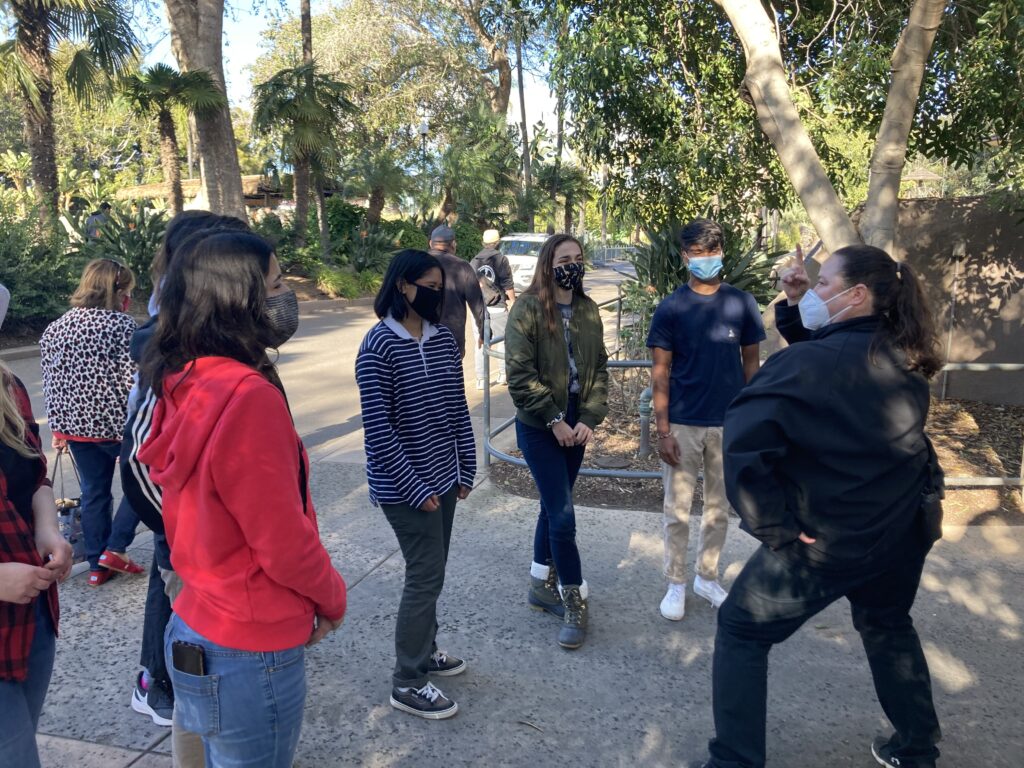
In addition to spreading the message of conservation at the Zoo, Ms. Elkins is the president of the Animal Behavior Management Alliance (ABMA). The ABMA is a non-profit organization of animal care professionals. The ABMA works to enhance animal care through training, enrichment and conservation efforts. Perhaps the most interesting project was when trainers flew to Africa to help teach dog handlers how to train their canine companions to sniff out cheetah scat. This helps researchers find and collect samples more easily to study the critically endangered feline. From the scat, they can assess cheetah health and get a general idea of how the felines are doing. The ABMA also gives out grants to help fund opportunities for animal behaviorists to participate in conservation projects on a global scale. Ms. Elkins encourages young people to take part in conservation by doing their own research on how they can help make a difference. Small things, like making sure your coffee is sustainably sourced, can have as much of an impact as refusing to support wildlife trafficking by avoiding wild animal petting operations. “The more we all do, the better it’s going to get,” she emphasized.
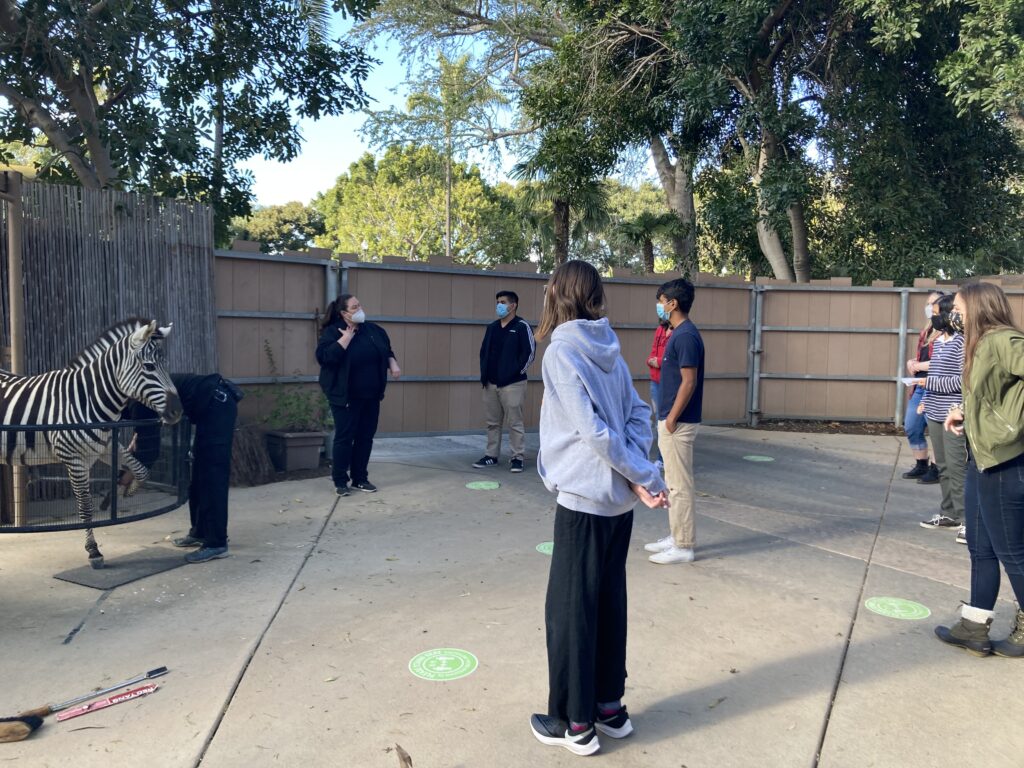
As Ms. Elkins has worked at the San Diego Zoo for 15 years, she had a lot of advice to give the interns. Originally, she wanted to be a dance teacher but her path changed when she realized she wanted to train animals rather than people. “Once I found this job I knew it was the one for me. There is a science and art behind training,” she said. Ms. Elkins told the interns that we decide our own destiny and told them to “find the thing you are passionate about because you will be working for the rest of your lives.” The interns learned that Ms. Elkins loves coming to work every day, but there are also sacrifices that have to be made for the job she loves so much. She spends more time at her job than with her family and does not get breaks for holidays, weekends, or summer. She cautioned the interns, saying “this is a very competitive field to get into” and if we are really passionate about working with animals and educating people about conservation, we should start volunteering now. “Any experience with animals you can get” is important when considering this field.
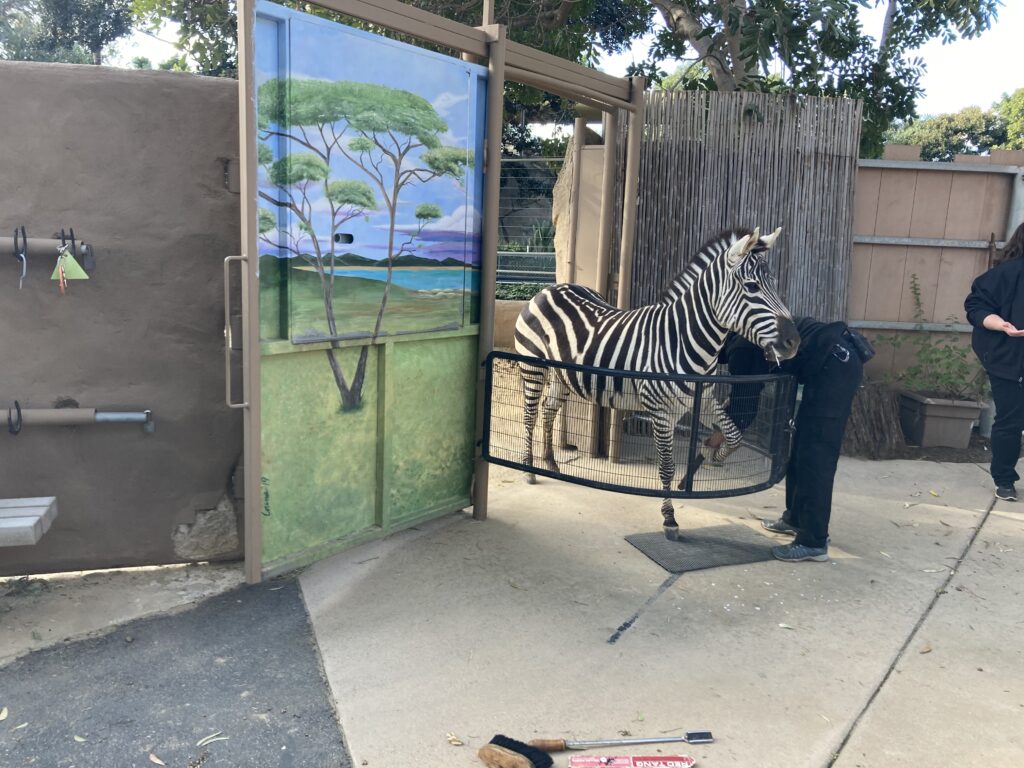
Throughout the day, the group had fun visiting different animals and learning about the ways Ms. Elkins strives to help different species and their habitats through her work training wildlife. Together with the wildlife ambassadors she trains, they inspire guests to take action and become an ally in conservation. The experience combined fun and learning in a way that made this encounter sure to be a memory the interns would never forget.
Week Two, Spring Session 2021

